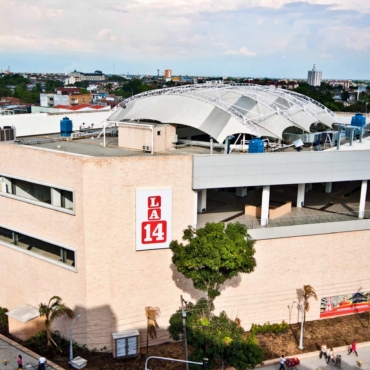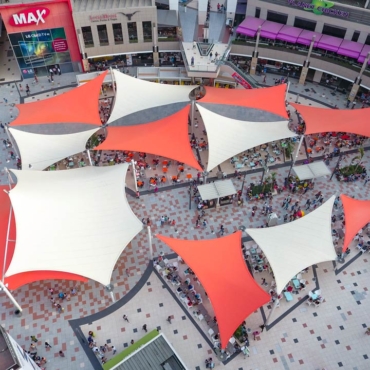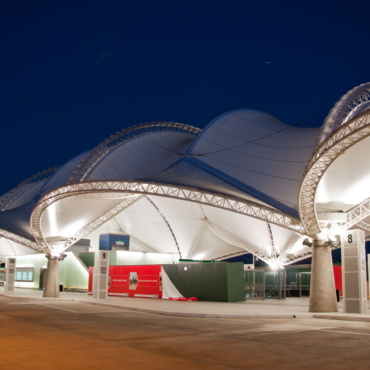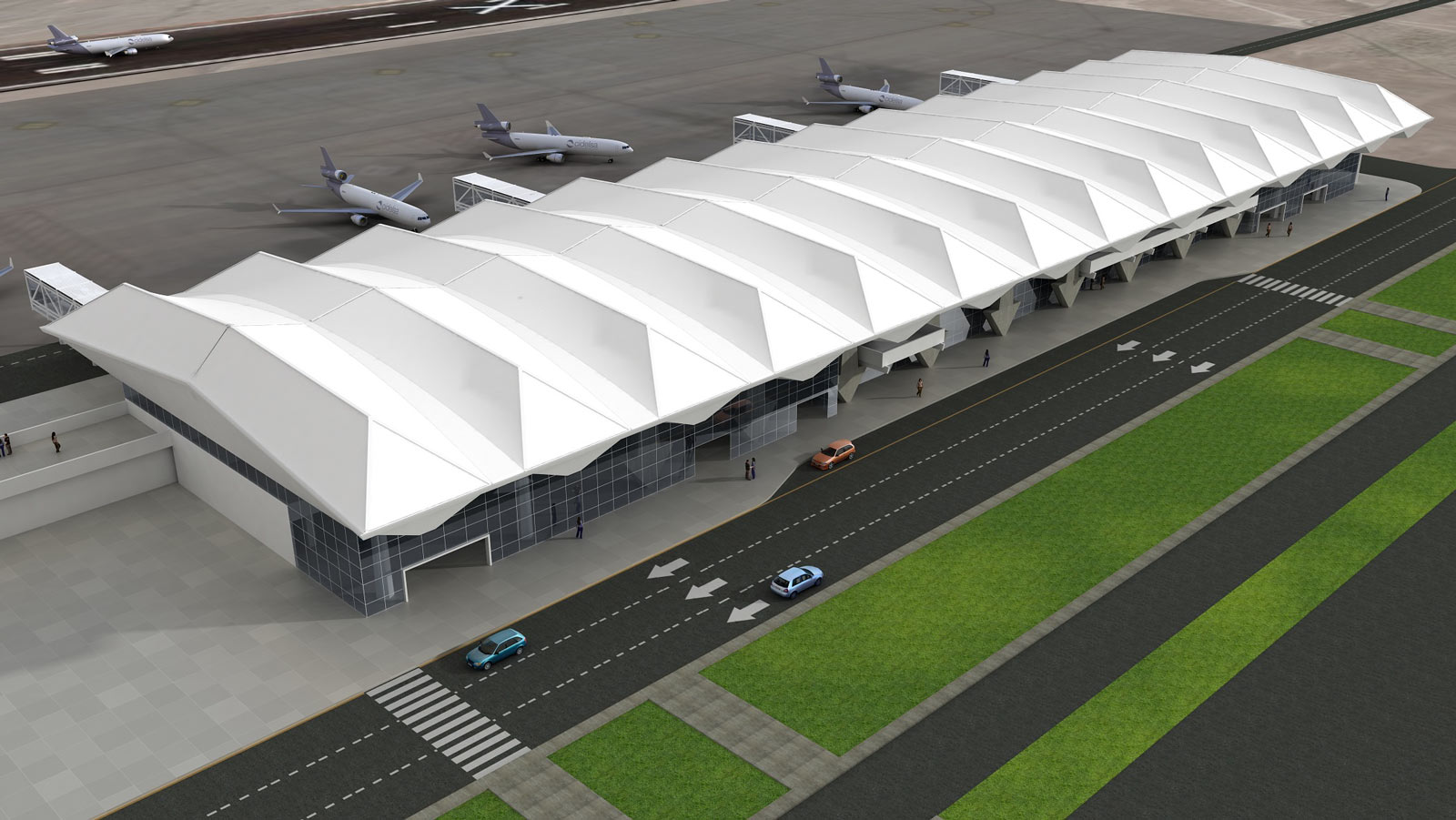
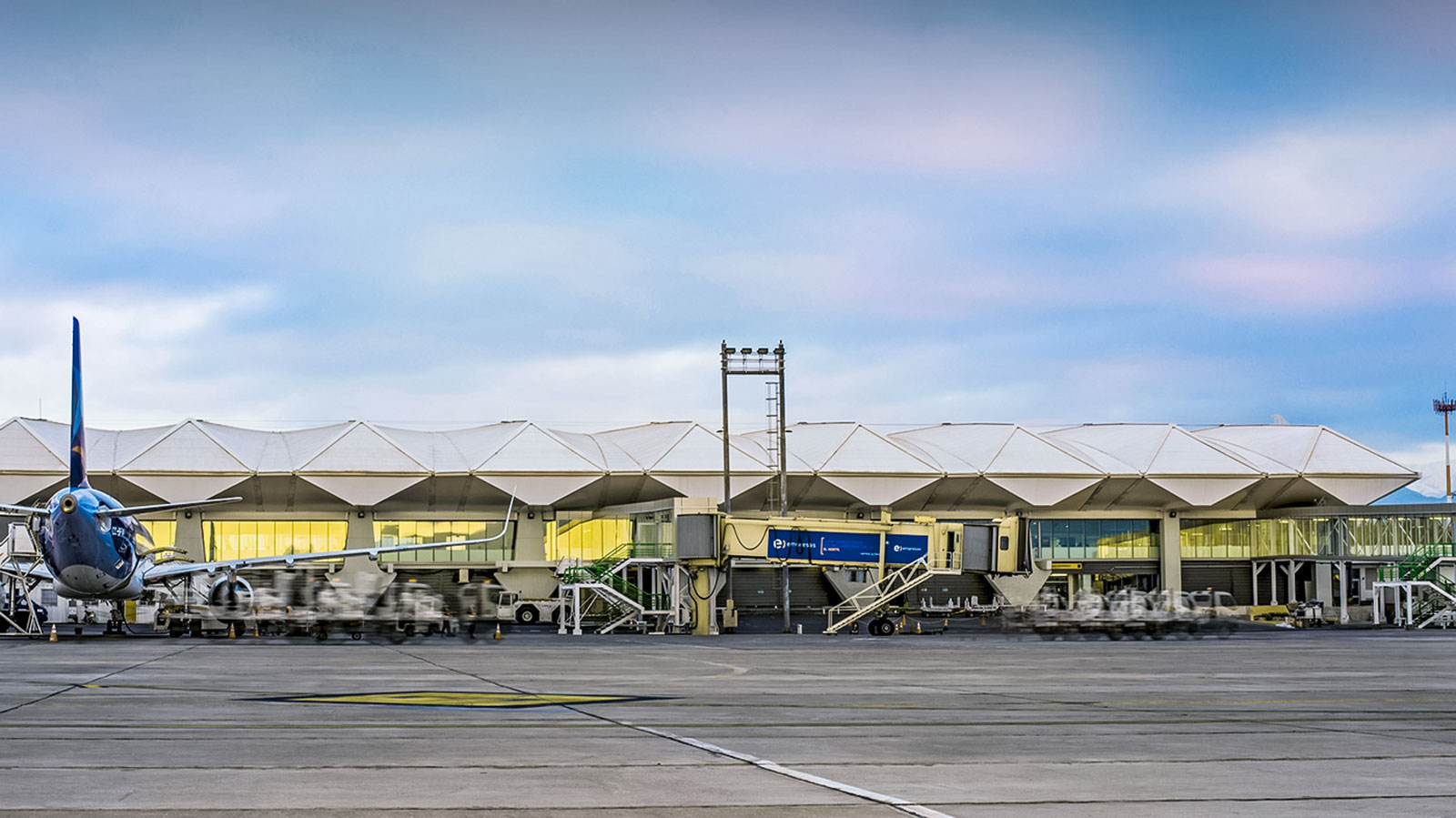

Opened in 1954, it is currently the most important passenger airport in Chile's Region II, located to the north of Antofagasta.
The building constructed in 1972 was to be modernized. The team of designer architects of the project decided to go for Tensile Structures for two reasons: aesthetics and cost savings.
Several options were developed in terms of shape and color, including single layer proposals with color inserts in copper, characteristic ore of the region, and translucent stripes. It was finally decided to use white and in double layers to control lighting and thermal aspects.
The design of the roofing maintained the same structural frame as such of the existing building, supported on the beams and columns every 12m. The area to expand maintained the same modulation. The cover was arranged in thirteen typical modules and a module at each end, north and south, covering 8300m². Each module is developed between two main beams and in turn into two parts, west and east divided by a central axis.
The construction was scheduled in two phases not to interrupt airport operations. Planning, -starting with the project- in terms of structure design and size of the tarpaulins, allowed covering large areas in a rather short time.
- Categories
- PVC MaterialTensile CoverTransport
- Tags
- AirportsChile
- Release Date
- 2012

